Bacteria and Viruses
Bacteria
Bacteria are single-celled microorganisms that are found everywhere. They can be both beneficial and harmful to humans and the environment. Bacteria have a simpler structure compared to viruses, with a cell wall and a cell membrane. They can reproduce on their own through binary fission.
- Characteristics of Bacteria:
- Prokaryotic cells
- Variety of shapes (spherical, rod-shaped, spiral)
- Beneficial roles in the environment (decomposition, nitrogen fixation)
- Some bacteria can cause diseases
Viruses
Viruses are tiny infectious agents that can only replicate inside the cells of living organisms. They consist of genetic material (DNA or RNA) enclosed in a protein coat. Viruses are not considered living organisms because they cannot carry out metabolic processes on their own and require a host cell to reproduce.
- Characteristics of Viruses:
Comparison between Bacteria and Viruses
| Characteristic | Bacteria | Viruses |
|---|---|---|
| Cellular Structure | Prokaryotic cells with cell wall and membrane | No cellular structure; genetic material enclosed in protein coat |
| Reproduction | Can reproduce on their own through binary fission | Require a host cell to replicate |
| Living Status | Considered living organisms | Not considered living organisms |
| Role in Disease | Some bacteria can cause diseases | Can cause a range of diseases in different organisms |
Study Guide
Here are some key points to study about bacteria and viruses:
- Describe the structure of a typical bacterium and a virus.
- Explain the differences in reproduction between bacteria and viruses.
- Discuss the role of bacteria in the environment, including their beneficial and harmful effects.
- Compare and contrast the characteristics of bacteria and viruses.
- Examine the impact of viruses on human health and methods of prevention.
Understanding the differences between bacteria and viruses is essential for understanding infectious diseases and how they can be managed and treated.
.◂Science Worksheets and Study Guides Seventh Grade. Bacteria and Viruses
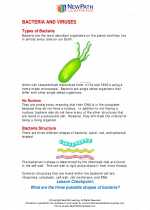
 Activity Lesson
Activity Lesson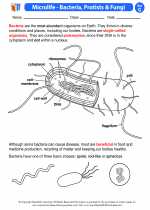
 Worksheet/Answer key
Worksheet/Answer key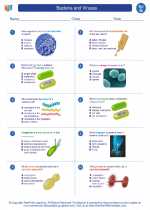
 Worksheet/Answer key
Worksheet/Answer key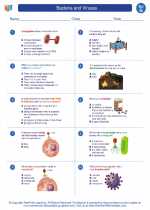
 Worksheet/Answer key
Worksheet/Answer key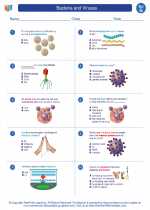
 Worksheet/Answer key
Worksheet/Answer key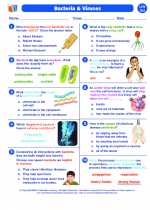
 Vocabulary/Answer key
Vocabulary/Answer key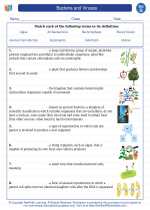
 Vocabulary/Answer key
Vocabulary/Answer key
 Vocabulary/Answer key
Vocabulary/Answer key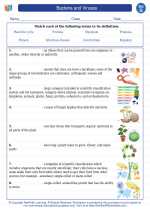
 Vocabulary/Answer key
Vocabulary/Answer key
